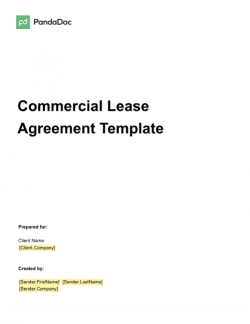Texas Commercial Lease Agreement
Commercial leases have fewer restrictions than residential leases. However, that doesn’t mean that there are no legal requirements for these contracts. Landlords must ensure their Texas commercial lease agreement contains all the necessary terms and disclosures.

Allocation of Repair and Maintenance Responsibilities Between Landlord and Tenant
- Generally, the lessor is responsible for exterior maintenance. That means the exterior walls and structural elements.
- The tenant is responsible for all interior maintenance.
- A separate clause can state who’s responsible for parking lots, common areas, paint touch-ups, etc.
- If the lessee makes modifications to the property, it’s their responsibility to maintain it.
- Commercial leasing laws don’t specify how long the landlord has to complete repairs. However, it should be within a reasonable time. For superficial problems, that’s around seven (7) days, while for significant issues, it might take longer.
Notice Requirements for Lease Termination or Non-Renewal
- Month-to-month commercial leases usually prescribe to the one-month notice period. While it’s not part of the commercial laws, it’s what residential landlords use, and often other lessors also follow it.
- Fixed-term leases don’t have a specific notice period. That’s because the agreement is supposed to end on the specified date. However, the lessor and lessee can add a notice period along with an early termination clause.
- Lessors generally add the early termination clause, which explains under which conditions the contract can be broken penalty-free.
- Generally, valid reasons to end the contract early are landlord harassment, tenant death, etc.
- If the tenant breaks the agreement early without a good reason, they can be penalized. These penalties are fees, lower credit scores, lawsuits, or difficulty finding a new commercial property.
- Often, the lessor implements a 30-day notice period when the lessee wishes to terminate the lease.
Conditions for Subletting or Assigning the Lease
- Subleasing isn’t illegal in Texas, but it depends on the lease’s terms.
- The landlord can allow subleasing or assigning, but with conditions. The lessee must get the landlord’s written approval to sublet or assign the lease.
- The sublease must follow all of the primary lease’s terms and rules.
- The tenant can sublease the property and make a profit from it. If that’s the case, the landlord can include a clause that entitles them to a percentage of that profit.
- If the tenant sublets the lease, then they act as a landlord for the sublessee. However, they must still fulfill their tenant duties towards the primary lessor.
- The landlord has the final say about any sublease, but they can’t unreasonably reject it if the original lease states a sublease is possible.
- A lessor can also state that no subletting or assigning of the lease is allowed. In that case, if the tenant were to sublet the property, they would be in violation of the contract, and the lessor can take them to court or begin the eviction process.

